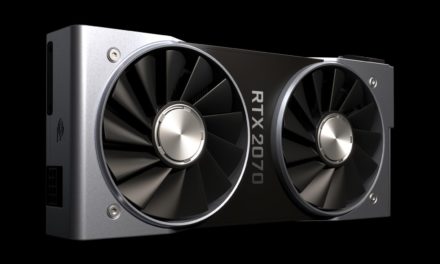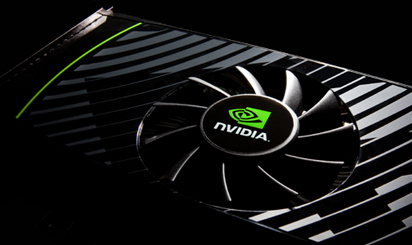
We tested the GK104: GeForce GTX 680 and high-end guns
Test applications, test configuration

These brutally powerful cards managed to pack an even stronger test configuration than usual. The Intel DX79SI motherboard and Intel Core i7-3960X processor pair came back to us, the 8GB Kingston HyperX RAMs ran at 2133 MHz. The Sandy Bridge-E, of course, was left unattended, received a minor tuning, and tested at 4600 MHz.

Applications used during measurements:
- GPU-Z 0.6.0
- CPU-Z 1.60 x64
- FurMark 1.9.2
- MSI Afterburner 2.2 beta 15
- 3DMark11 1.0.2.0
- Unigine Heaven Benchmark 3.0
- LuxMark v2.0 x64
- ComputeMark v2.1
- Mars GPU PhysX Benchmark
- TessMark 0.3.0
- MediaEspresso 6.5.2119_41281
- Battlefield 3 + FRAPS 3.4.7 build 13809
- Crysis 2 1.9 + DX 11 patch + Hi-res - Adrenaline Crysis 2 benchmark tool 1.0.1.13
- Hard Reset + Update 7 (built-in measurement)
- Shogun 2 + DX 11 patch (built-in measurement)
- F1 2011 (built-in measurement)
- Hawx 2 DX11 benchmark b_v1.04
- Alien vs Predator benchmark v1.0.3 + GUI x64
- Batman Arkham City 1.01 (built-in measurement)
Test card settings
With the following GPU-Z images, we emphasize what has already been said orally, i.e. that we have set the values recommended by the manufacturer for each card at the time of measurement. The only exception to this, of course, was the GTX 680, which we measured on our own factory-tuned clocks in addition to the reference frequencies.
 |  |
 |  |
 |  |
Using graphics drivers
Before describing the results of the tests, we need to clarify how we performed them. For the synthetic measurements (3DMark11, 3DMark Vantage / PhysX off /, Unigine Heaven Benchmark) we did not tweak the settings of the GeForce driver or Catalyst, everything ran according to the factory configuration. However, after the synthetic measurements, we manually turned on the 16 × anisotropic filtering for the games, because in many applications this is not possible from the program, but we felt its presence was necessary for the measurements.
Measurement of consumption and warming
Opponents were also subjected to consumption and warm-up measurements. The appetite of the cards was tested with a wattmeter by recording the value of no-load consumption at rest under Windows, this time we tested the systems with Blu-ray, Alien vs Predator and Furmark at load. During all measurements, we tried to form an approximate average from the data seen, but since these are not measurements performed under laboratory conditions, they are for information only. MSI Afterburner 2.2 beta 15 was used to monitor temperature values, load levels, and fan speeds, monitoring was performed after a brief period of rest during the FurMark load phase, and then the cards were allowed to cool. The power management features of the processor were turned off.
Consumption:

As described in the introduction, Kepler’s design philosophy has changed significantly compared to Fermie, which has promised much more favorable omens in terms of consumption. When unloaded, the GeForce GTX 680 is the second least consuming card in the field, only the Radeon HD 7970 was able to stay more fuel efficient. With GPU-accelerated Blu-ray playback, the GTX 680 is already towering to the forefront and is very affordable. In the Alien versus Predator, too, Kepler continues to excel, with 345 watts being by far the least consuming model in the field, and this shape has persisted under FurMark as well. NVIDIA’s current stunt is something we haven’t seen from the company in many years, as somehow the horse has always run away in consumption and failed to compete with AMD, but now we’ve managed to put together a top card that not only picks up the it can beat the competition with the top model of the competition, but depending on the area of use, it can beat it, which is a serious good news for customers, especially those who prefer sympathy with GeForce models. NVIDIA will probably be able to pass this good form on to later, cheaper cards cut out of the GK104.
Warming:
Let’s see how the coolings handled the cards dormant when unloaded and then the 5 minutes of severe FurMark load!
GTX 680 base clock signal | GTX 680 tuned |
GTX 580 | GTX 590 |
HD 7970 | HD 6990 |
We won’t make a comparison this time around, as some cards work with individual cooling. These include the GIGABYTE GTX 680, whose efficiency is noteworthy, as (at the base clock) this brute force was able to keep the cooling at 27 degrees, almost at room temperature, while the GPU temperature did not climb to 58 degrees even under heavy load, which is a in the case of a peak card, it can also be considered a feat, especially so that the three fans did not make any serious noise at all during the operation.























